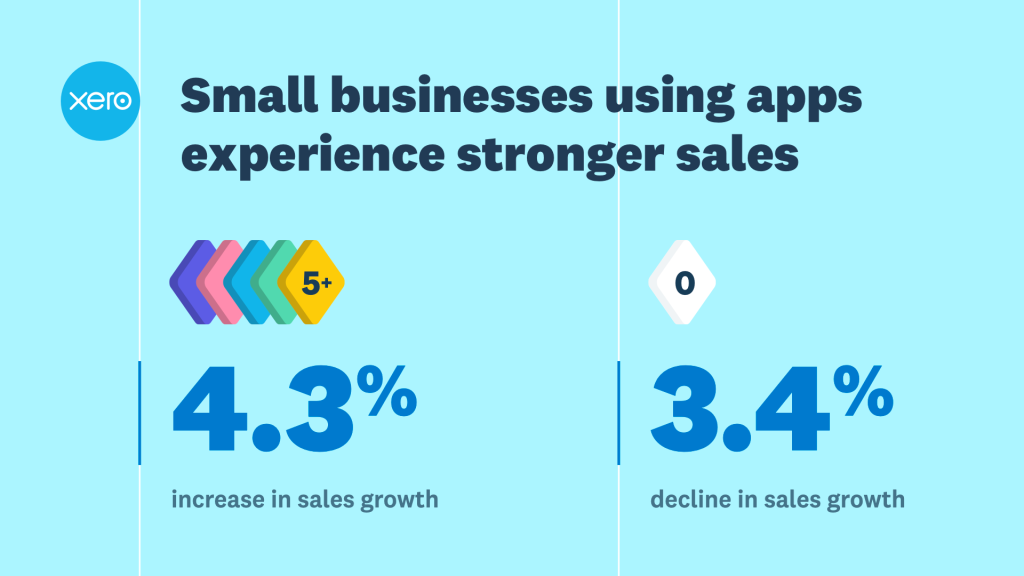
Since its inception in 2006, Xero has grown to 3.3 million subscribers worldwide. It’s the top accounting software brand in its native New Zealand, and in neighboring Australia. However, since it entered the North American market in 2011, Xero has faced strong headwinds from the giant in this market, Intuit QuickBooks. At the close of its FY22 fiscal year (March 31, 2022), North America accounted for less than 10 percent of Xero’s revenues. With that in mind, I was interested in learning more about Xero’s plans for this region going forward. I got my chance to get a closer look at Xerocon 2022 in New Orleans, which I attended in August. Here are my main takeaways about how Xero is charting its course.
Investing for Long-Term Growth
Xero’s CEO Steve Vamos made it crystal clear that Xero is committed to the North American market. He and other Xero executives discussed its investments in both the necessary fundamentals and new capabilities that the market requires. These include:
- Creating more high-quality banking data feeds. With 4,000 banks in the U.S., and 35 in Canada, delivering high-quality bank feeds is a daunting task. However, accountants need these feeds to power advisory services and Xero is intent on building new banking partnerships. Last year, it added direct feeds with Citi, Chase, and Bank of America, and more are in the pipeline. Xero also integrates with Yodlee to connect to online banking websites and financial institutions that Xero doesn’t work with directly. The vendor also announced a new Hubdoc Bank Reconciliation Extraction, which extracts transaction data from digital PDF bank statements and imports it into Xero for year-end bookkeeping. This feature works now with the top four banks in the U.S. and Canada, with more on the way.
- Solving the sales tax issue. Xero announced a new partnership with Avalara to integrate Avalara directly into its platform. This capability will be available for Xero customers at no extra charge.
- Adding new inventory management capabilities. Last year, Xero acquired LOCATE, a U.S.-based cloud inventory management provider, and is using this acquisition to build a multi-channel inventory solution designed specifically for small goods-based businesses. In beta now, this solution will be part of the Xero platform.
- Improved reporting for better financial analysis. Along with a refreshed design, Xero has added some cool new features to its reports. One that should be particularly useful is report annotations, which accountants can use to better explain the information in a report to their small business customers.
- Extended and enhanced tax offerings for Canada. Building on last year’s acquisition of TaxCycle, Xero has expanded the integration to include additional forms so partners can prepare year-end taxes for their customers more easily and quickly. Xero partners receive the Xero Partner Program discount for TaxCycle products.
The vendor also announced the launch of its Xero Small Business Insights (XSBI) program in North America. Xero has been producing similar insights for Australia, New Zealand, and the U.K. for several years. For this program, Xero uses anonymized and aggregated data to track the performance of small businesses in North America to provide small businesses and their advisors with insights to help guide better decision-making. As is already the case in other regions, it’s also likely that North American policy-makers will use these insights to help inform their perspectives on small business trends.
Unserved Small Businesses are Xero’s Focal Point
In North America, Xero is primarily targeting small businesses that manage financials with spreadsheets and/or pencil and paper, along with new business startups.
SMB Group research shows that the lower end of the small business market is still quite under-penetrated. Furthermore, new business starts are booming. According to U.S. Business Formation Statistics, applications to start new businesses have risen steadily: In 2010, the number of new business applications was 2.50 million; by 2021 this figure rose to nearly 5.4 million.

Combined, these greenfield opportunities give Xero plenty of room to grow without trying to unseat QuickBooks from existing accounts.
Leading With a Partner-first Strategy
CEO Steve Vamos pledged that Xero would never offer direct bookkeeping services, and voiced his belief that “no matter how good technology gets, it will never get to a point where small businesses don’t need the human touch and direction from advisors.” He promised that accountants and bookkeepers will continue to serve as Xero’s primary channel—a message that was enthusiastically cheered by Xerocon attendees.
Some steps that Xero is taking to help partners include:
- Closing product gaps, such as those discussed above, so partners can deliver more complete offerings.
- Expanding Xero’s developer ecosystem to give accountants more of the building blocks accountants needed to create more comprehensive advisory services.
- Enhancing partner education and programs, such as:
- Xero Central. which uses artificial intelligence to provide insights and information, and is currently logging 1.5 million visits per month.
- Xero HQ, which helps partners to manage their clients’ portfolios.
- Xero Workpapers, to manage paperwork online.
Xero has also introduced a somewhat unique offering, Business Continuity Hub, to provide partners with techniques and tools to navigate through unforeseen disruptions—certainly of value in these volatile times.
Judging from the accounting partners featured on stage, and several one-on-one conversations I had, it seems that Xero is particularly keen on recruiting younger, more tech-savvy accountants. For instance, one of the partners that took the stage, Chad Davis, from LiveCA LLC, discussed how Xero has helped him to grow his outsourced CFO service to 110 employees in six years.
Community is Vital to Success
Throughout the event, Xero execs emphasized that community is key to growth. The more apps in the ecosystem, the more data that can flow into Xero to power insights, and develop new apps and services.
Chris O’Neill, Xero’s Chief Growth Officer, noted that Xero customers that use connected apps are much more likely to be growing revenues than peers that don’t.

To that end, Xero will continue to recruit new platform partners, with a focus on applications that help small businesses get paid faster, and to better manage payroll and people, and inventory.
Key programs designed to further this goal include:
- Xero API Explorer enables developers, small businesses, and financial advisors to interact with their Xero data and explore, understand and use Xero’s 11 APIs with over 100 endpoints. The tools provide guidance on building requests, tools to create, read and update Xero and Xero Demo Org data, the ability to connect and switch between multiple Xero organizations, and custom headers to understand and troubleshoot integrations.
- App Launcher integrates Xero App Store’s apps directly into the My Xero dashboard via a dropdown tab with the navigation bar. This enables customers to find, try and browse apps from within Xero.
- Xero’s App Stack approach provides application recommendations by 20+ functions, 15 industries, and 3 collections.
Partners are already using these tools to create tailored offerings for different industries. For example:
- Aduro Advisors offers an app stack with Fund Panel to streamline reporting and communications for venture capital firms.
- Lance CPA Group has created an app stack for craft breweries that includes Xero, Gusto, Avalara, Square, Fathom, and Bill.com, which it has sold to more than 100 craft breweries.
- Pinion IO’s integrated suite for agriculture businesses consists of Bill.com, OnPay payroll, PowerBI, and other apps.
Perspective
Gaining mind and market share in the North American accounting market hasn’t been easy. However, Xero has stayed the course, continuing to build out product, channel, and marketing programs designed specifically for the U.S. and Canada.
Xero’s demonstrable commitment to getting the basics right (such as bank feeds, sales tax, refreshed reporting capabilities, and more), coupled with its appetite to develop new capabilities (such as inventory management and tax preparation) should help it convince more prospective customers and partners that it is in North America for the long haul.
Among accountants, reassurances that it will not offer its own accounting services should give Xero some much-needed differentiation against Intuit QuickBooks, as some partners may view QuickBooks Live as a disintermediation threat.
Xero’s expanding App Stack and community approach should also help Xero to expand its footprint. Even without a formal initiative in place, several of Xero’s accounting partners are gaining good traction with industry-specific stacks. Intentionally engaging with partners for this purpose could potentially yield great returns.
Xero’s intent to focus on the unserved accounting market is another step in the right direction. If it can get more than its current share of new customers from this huge, untapped market, it can grow its overall market share. But there’s a caveat here: SMB Group research reveals that 50% of small businesses that don’t use accounting software (the unserved group that Xero is targeting) say it’s because “manual methods/spreadsheets have worked well for us.” Not an easy task when you realize that most small business owners lack an accounting background, and many don’t use the services of an external accountant or bookkeeper.
To clear this and other hurdles, Xero needs to couple the initiatives it has already embarked on with marketing investments—not only to elevate brand awareness but to educate small business owners about the value that dedicated accounting software brings to a small business.
This post was sponsored by Xero.
© SMB Group, 2022
Source: Laurie McCabe’s Blog
